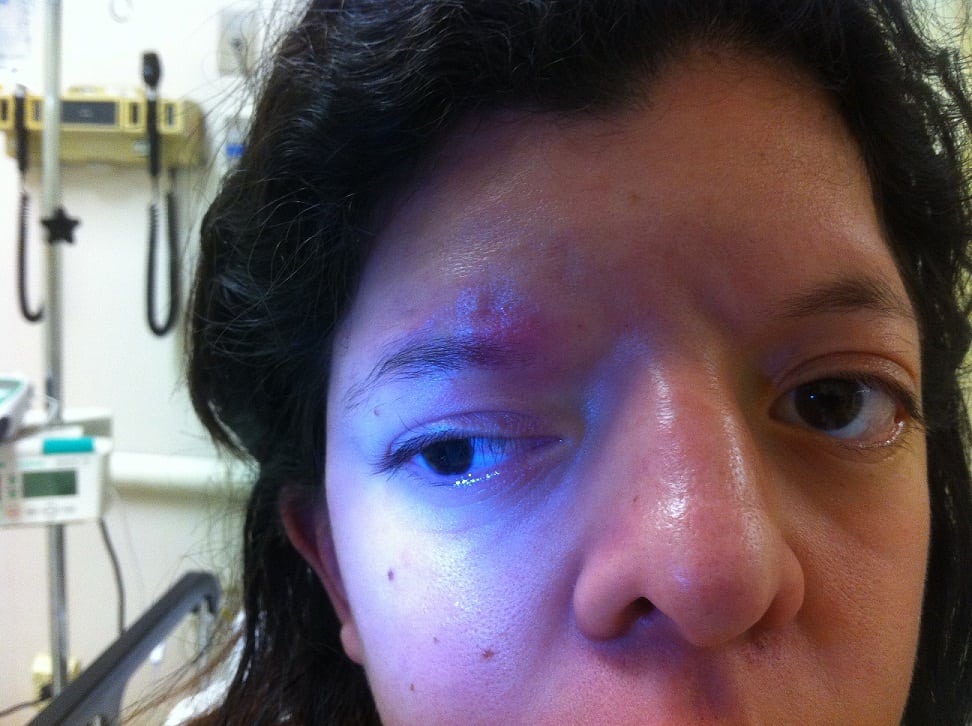

The mean duration of follow-up was 13.7 years (range, 2–20 y). Patients’ mean age at surgery was 10 years (range, 6–13 y). To ensure solidity, the fascia was fastened to the nuchal ligament.
Webbed neck syndrome skin#
All patients benefited from a surgical approach based on a new posterior technique, including half-moon resection of the skin fold with an inferior back-cut and suturing of the superficial lamina of the cervical fascia.
Webbed neck syndrome series#
We describe a series of 5 girls with Turner syndrome who were managed in our department at the University Hospital Center of Toulouse-Rangueil, France. The surgical management of this malformation remains challenging as it requires the achievement of a harmonious neck profile and natural hairline implantation. Although the visibility of this skin fold varies among patients, it frequently has negative social effects. This congenital deformity manifests as a bilateral cervical skin fold stretching from the mastoid to the acromion.

The prevalence of pterygium colli (“webbed neck”) is 75% in patients with Turner syndrome. In a CS/CFC patient no HRAS mutations were found, but a novel SOS1 missense mutation was found: A to G transition at position 473, causing a T158A substitution within domain of histone-like fold (HF).Ī case mimicking CS with SOS1 T158A substitution, which has not been reported previously in CS, revealed the complex relationship between the genotype and phenotype of overlapping syndromes of the RAS/RAF/MEK/ERK pathway. In a patient with a severe Noonan phenotype, a rare PTPN11 mutation was detected: A to G transition at position 172, causing an N58D substitution within the N-SH2 domain. The protein phosphatase, non-receptor type II (PTPN11), KRAS, HRAS, NRAS, BRAF, RAF1, Son of Sevenless (SOS1) and MEK1genes were analyzed. Peripheral blood samples were collected from all patients as well as from 100 healthy Japanese volunteers. Three patients with NS and two patients with CS/CFC were examined. The aim of the present study was to conduct a comprehensive genetic analysis of RAS/RAF/MEK/ERK pathway in these syndromes. Each of these syndromes has a wide spectrum of molecular etiology. Ideally, a person who undergoes a genetic test will discuss the meaning of the test and its results with a genetic counselor.įinding specialized care for Turner Syndrome can be challenging, and we are dedicated to expanding this network of support.Germline mutations in several members of RAS/RAF/MEK/ERK pathway cause clinically similar genetic disorders, including Noonan syndrome (NS), Costello syndrome (CS) and cardio-facio-cutaneous syndrome (CFC). Genetic testing may be performed prenatally or sometime after birth. Since Turner syndrome is a complex condition affecting each person uniquely, patients may be seen by any number of specialists including, cardiology, nephrology, dermatology, gastroenterology, orthodontic, orthopedic, ENT, opthomology, psychiatry, and so on. They take care of many conditions including:Įndocrinologists also conduct basic research to learn the way glands work, and clinical research to learn the best methods to treat patients with a hormone imbalance. Endocrinologists are trained to diagnose and treat hormone imbalances and problems by helping to restore the normal balance of hormones in your system. Your primary care doctor may refer you to an endocrinologist when there is suspicion or a known problem with your endocrine system.


 0 kommentar(er)
0 kommentar(er)
